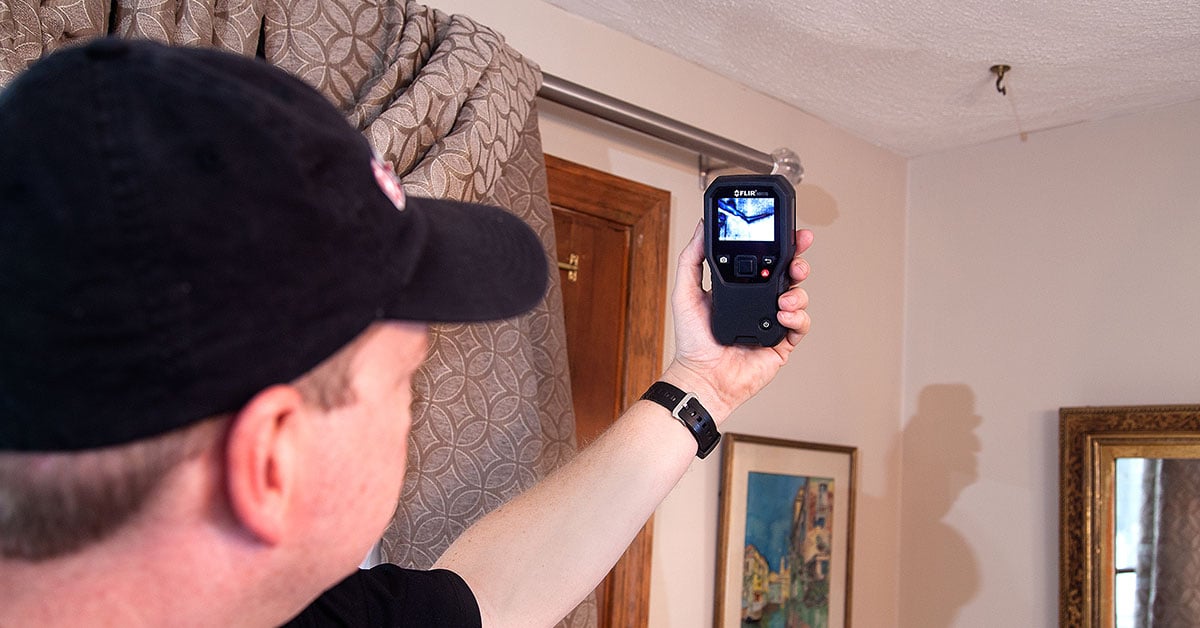How do you actually feel on the subject of Detecting hidden plumbing leaks?

Early detection of dripping water lines can mitigate a prospective disaster. Some small water leakages might not be noticeable.
1. Analyze the Water Meter
Every home has a water meter. Examining it is a surefire way that assists you uncover leaks. For starters, turn off all the water sources. Make sure no person will certainly purge, use the faucet, shower, run the washing maker or dishwashing machine. From there, most likely to the meter as well as watch if it will certainly change. Given that nobody is utilizing it, there must be no activities. That suggests a fast-moving leakage if it relocates. Furthermore, if you discover no changes, wait a hr or 2 and also examine back once more. This means you might have a sluggish leak that can even be underground.
2. Inspect Water Consumption
If you identify sudden modifications, in spite of your intake being the same, it indicates that you have leakages in your plumbing system. A sudden spike in your expense shows a fast-moving leak.
At the same time, a steady increase each month, despite having the same routines, reveals you have a slow leak that's also slowly intensifying. Call a plumber to thoroughly check your residential property, particularly if you feel a warm area on your flooring with piping beneath.
3. Do a Food Coloring Examination
When it comes to water intake, 30% comes from toilets. If the shade in some way infiltrates your bowl during that time without flushing, there's a leakage in between the tank and also bowl.
4. Asses Exterior Lines
Do not fail to remember to check your exterior water lines as well. Ought to water permeate out of the connection, you have a loose rubber gasket. One little leak can throw away heaps of water and increase your water bill.
5. Evaluate the scenario and check
Property owners must make it a habit to inspect under the sink counters and also also inside cabinets for any type of bad odor or mold and mildew development. These two red flags suggest a leak so prompt interest is called for. Doing regular inspections, even bi-annually, can save you from a major issue.
If you recognize your residence is currently old, maintain a careful eye on your heating systems, pipes, pipelines and so on. Check for discolorations as well as compromising as many pipes and appliances have a life expectancy. They will additionally normally weaken due to wear and tear. If you think dripping water lines in your plumbing system, don't await it to intensify. Call an expert plumber right now so you do not end up with a terrible mess in your house.
Early detection of leaking water lines can minimize a prospective calamity. Some small water leaks may not be noticeable. Checking it is a proven way that helps you uncover leaks. One tiny leak can squander lots of water as well as spike your water bill.
If you suspect dripping water lines in your plumbing system, do not wait for it to intensify.
WARNING SIGNS OF WATER LEAKAGE BEHIND THE WALL
PERSISTENT MUSTY ODORS
As water slowly drips from a leaky pipe inside the wall, flooring and sheetrock stay damp and develop an odor similar to wet cardboard. It generates a musty smell that can help you find hidden leaks.
MOLD IN UNUSUAL AREAS
Mold usually grows in wet areas like kitchens, baths and laundry rooms. If you spot the stuff on walls or baseboards in other rooms of the house, it’s a good indicator of undetected water leaks.
STAINS THAT GROW
When mold thrives around a leaky pipe, it sometimes takes hold on the inside surface of the affected wall. A growing stain on otherwise clean sheetrock is often your sign of a hidden plumbing problem.
PEELING OR BUBBLING WALLPAPER / PAINT
This clue is easy to miss in rooms that don’t get much use. When you see wallpaper separating along seams or paint bubbling or flaking off the wall, blame sheetrock that stays wet because of an undetected leak.
BUCKLED CEILINGS AND STAINED FLOORS
If ceilings or floors in bathrooms, kitchens or laundry areas develop structural problems, don’t rule out constant damp inside the walls. Wet sheetrock can affect adjacent framing, flooring and ceilings.
https://www.servicemasterbyzaba.com/blog/how-to-detect-water-leakage-in-walls/

As an avid person who reads on Finding hidden leaks, I thought sharing that piece of writing was really useful. Enjoyed reading our piece? Please share it. Let others find it. Many thanks for your time. Visit us again soon.